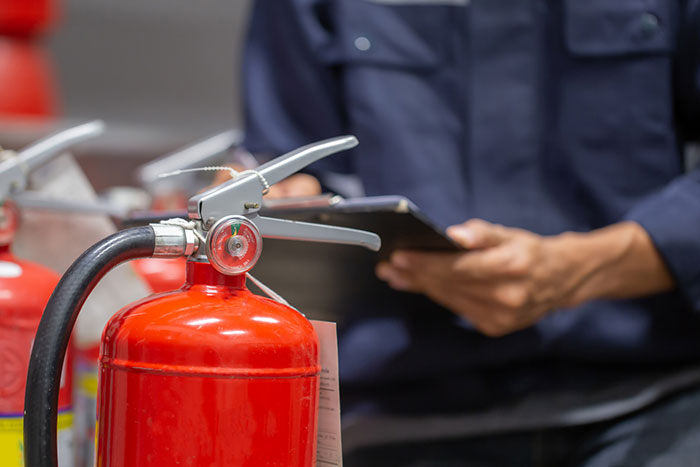Having a properly functioning fire extinguisher can be the difference between a minor fire and a major disaster, so it’s no surprise that fire extinguishers are essential legal requirement for every commercial building. Many buildings need more than one extinguisher and more than one type or class of extinguisher to be compliant with the law. Not only do businesses need to ensure that proper fire extinguishers are installed, but it’s vital that they are in proper working order, and that they have not expired.
The Lifespan of a Fire Extinguisher
Over time, chemicals inside a extinguisher can break down or lose their effectiveness, and this can render the extinguisher ineffective in a fire. Additionally, the seals, hoses, and other parts of the extinguisher can deteriorate over time, which can also impact its ability to function properly. Fire extinguishers all have an expiration date which is typically stamped its side, and depending on the type of extinguisher it is, the expiry date could be anywhere between 5 and 15 years from the date of manufacture.
Checking Your Fire Extinguishers
It’s important to regularly inspect your fire extinguishers to ensure that they are in good working order, and to replace them before they expire. The AS/NZS 1851:2012 standard for the routine service of fire protection systems and equipment stipulates how often extinguishers need to be tested and recharged. According to this standard, all extinguishers must be inspected, tested, and tagged at six monthly intervals. There may be other servicing requirements at 12 months, 3 and 5 years.
If you notice any damage to your extinguisher, such as dents or cracks, or if the pressure gauge indicates that the extinguisher is not fully charged, it should be replaced immediately.
When checking your fire extinguishers, you should:
- Check the pressure gauge – The pressure gauge is found the handle or body. The needle on the gauge should be in the green zone, as this indicates that the extinguisher is properly pressurised. If the needle is in the red zone, the extinguisher should be recharged or replaced.
- Check the pull pin and tamper seal – Make sure the pull pin is securely in place and that the tamper seal is intact. If the tamper seal is broken or missing, the extinguisher may have been used or tampered with and should be inspected by a professional.
- Inspect the extinguisher for damage – Check the body, nozzle, hose, and other parts of the extinguisher for any signs of damage, such as dents, cracks, or corrosion. If the extinguisher is damaged in any way, it should be replaced.
If you’re not sure how to check a fire extinguisher, it’s important to seek professional advice. There’s little point having fire extinguishers accessible if they will fail to help you in a fire emergency.
What About Domestic Fire Extinguishers?
If you have a fire extinguisher installed in your home, it should also be inspected regularly. Portable fire extinguishers come with a use by date which should be clearly marked on the canister. This period is usually around 5 years from the date of manufacture but it will vary based on the brand.
Trust Safety Dave for All Your Fire Safety Equipment
As Australia’s premier destination for safety equipment, we have everything you need to optimise safety in your workplace, home, car, or even caravan. From reversing cameras and TPMS, to a high-quality AED defibrillator, you can count on us to keep your home or business as safe as possible. Purchase fire extinguishers or a defibrillator for sale, and rest easy knowing you are prepared for almost any emergency. Call us today on 1800 072 338 or get in touch with us online now.


